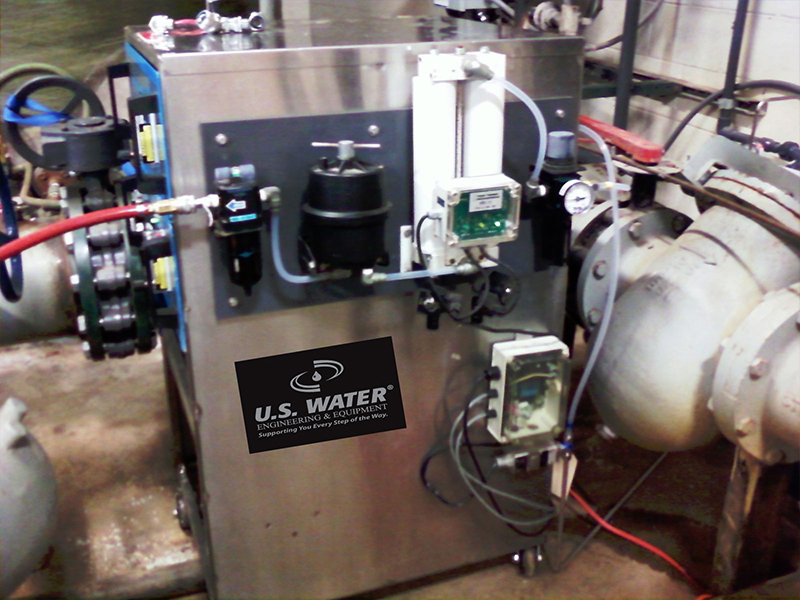The use of Ozone has become an optional biocide in smaller cooling towers, evaporative condensers and process applications where low to moderate traditional biocides, such as bleach and bromine, have been used. Facilities seeking ‘green' solutions are using Ozone to reduce chemical discharge, reduce on-site chemical handling by workers, and provide a hands off treatment approach, especially in hard to treat locations like rooftop units where traditional chemical dosing may be difficult.customized inflatables
Ozone acts as an oxidizer, much like chlorine or bromine, improving system turbidity and removing bio-slime. When coming into direct contact with bacteria, it oxidizes the organic material in bacterial membranes, which weakens the cell wall and leads to cellular rupture. This exposes the organism to the external environment, which causes almost immediate death, keeping your system clear of biological fouling. Ozone also functions as a micro flocculating agent to “polish” the water and improve clarity. Ozone treated water will maintain better heat transfer efficiencies through reduced biological fouling and increased water clarity.
Ozone cannot be stored or transported like other industrial gases because it quickly decays into diatomic oxygen and should be produced on site. Because ozone is a short-lived gas molecule that is formed when oxygen reacts with other oxygen molecules to form 3 parts oxygen (O3). This reaction requires energy. Ozone Generators form ozone by passing dry, clean air through a high voltage electric discharge, i.e., corona discharge, creating ozone at a concentration of approximately 1%. Corona discharge method is the most common type of ozone generation; these units usually work by means of a corona discharge tube. They are typically cost-effective and do not require an oxygen source other than the ambient air to produce ozone.
Temperature and humidity plays a large role in how much ozone is being produced. The dominating parameter influencing ozone generation efficiency is the gas temperature, which is controlled by cooling water temperature and/or gas velocity. The cooler the water, the better the ozone synthesis. The lower the gas velocity, the higher the concentration, but the lower the net ozone produced. In typical industrial conditions, almost 90% of the effective power is dissipated as heat and needs to be removed by a sufficient cooling water flow.
Since ozone is generated at and injected directly into the water stream, there are no containers of hazardous biocide that can leak, spill or otherwise endanger employee safety. The oxidation power of ozone is actually greater than chlorine (bleach). While ozone does not remove all minerals or particles, it is extremely effective at containing and eliminating costly micro-biological growth, killing bacteria on contact 3100 times faster than chlorine. Ozone's short reaction time also makes it environmentally friendly. Very little residual is maintained within the cooling tower or condenser since the short lived reaction takes place immediately after injection into the water stream. This allows for a cleaner and more environmentally friendly discharge to the environment as well as an easier path to compliance with discharge permitting.
While ozone can be a benefit to many systems, it is not the best option for all systems. A plant footprint is needed for equipment and ozone is not ideal for high load or high stress systems. Make sure to check with your water treatment representative regarding whether or not ozone is a viable option for your system.

